#Ngāti Awa
Text
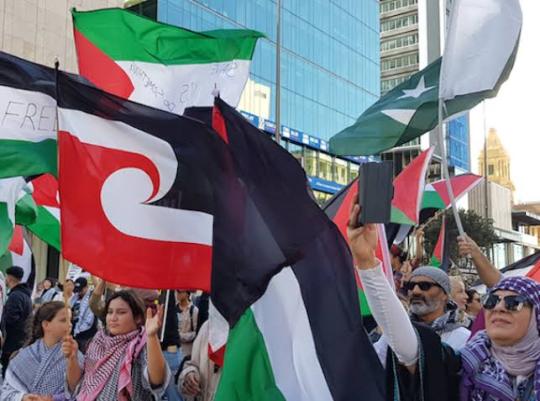
The Māori tino rangatiratanga [sovereignty, self-determination] flag flying alongside Palestinian flags. The tino rangatiratanga flag is black at the top and red at the bottom, the two colours separated by white lines forming a koru (spiral). The Palestinian flag has three horizontal stripes (black, white and green) with a red triangle on the left.
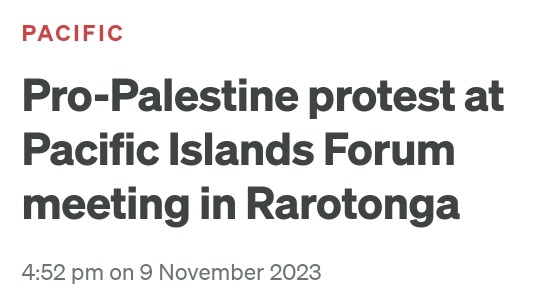
"Pro-Palestine protest at Pacific Islands Forum meeting in Rarotonga"

A young child holding an ili (Samoan woven fan) that says Samoa for Palestine

A young boy holds a sign reading Justice the seed, peace the flower / Ko te mana whakaaiko hei kākano, kia puawai mai te maungarongo. Beneath is artwork of a fist breaking free from chains below blooming flowers.


Left: the 1975 Māori Land March. Right: the 2018-2019 Palestinian Great March of Return.
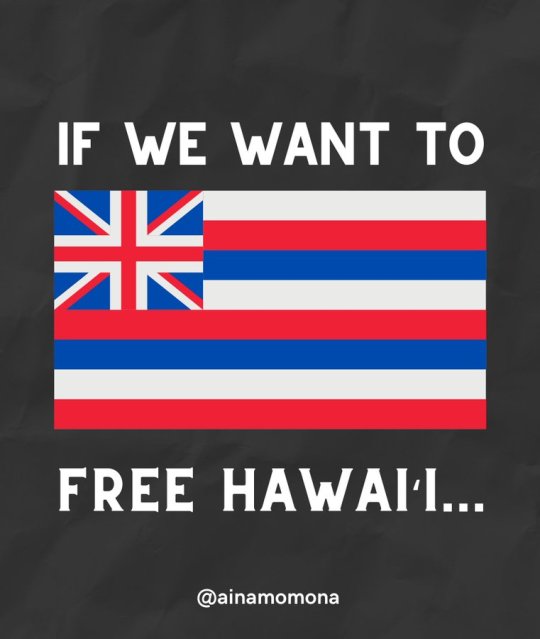

If we want to free Hawai'i... [Hawaiian flag] we must also free Palestine [Palestinian flag]. Credit to @ainamomona

A young Māori boy holding a sign that reads MANA MOTUHAKE [independence/autonomy] 4 PALESTINE

A Fijian woman holding a sign that reads Food is not a weapon of war! Stop starving Palestinians! Behind are two more signs. One says CEASEFIRE NOW and the other says DON'T STOP TALKING ABOUT GAZA
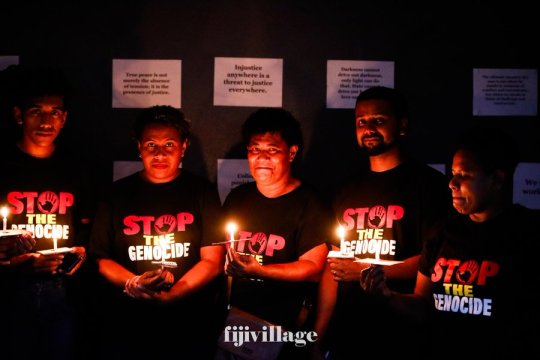
A group of Fijians holding candles and wearing shirts that read STOP THE GENOCIDE
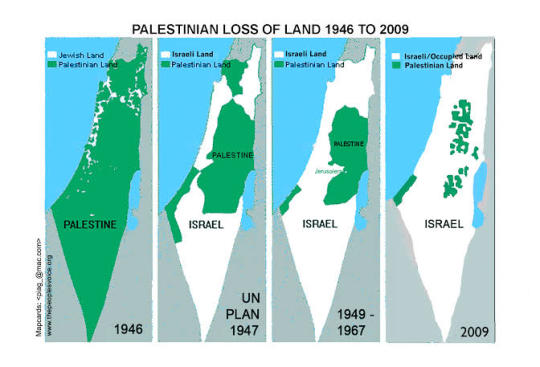
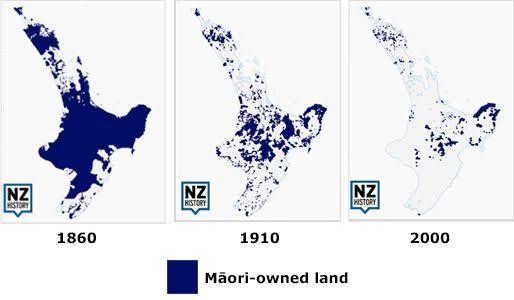
Left: a diagram of Palestinian land loss between 1946 and 2009. Right: a diagram of Māori land loss in the North Island of Aotearoa between 1860 and 2000.

A sign reading TANGATA WHENUA [indigenous people] FOR PALESTINE [tino rangatiratanga symbol, Palestine flag symbol]

Three Pasifika people holding signs. The first says MAI LE VAITAFE AGA'I I LE SAMI! [Samoan: from the river to the sea] FREE PALESTINE! The second sign says FROM OUR PASIFIKA OCEAN TO THE RIVER TO THE SEA FREE PALESTINE. The final sign shows the Palestinian and Tongan flags and says 'OFA KI PALESITAINE [Tongan: Love to Palestine]

A group of Pasifika holding signs and banners. They say "HOW MANY MORE KILLINGS IS ENOUGH FOR YOU?" "KŪ'E! KŪ'E! [Hawaiian: Resist! Resist!] PASIFIKA STANDS WITH PALESTINE" "'OFA KI PALESTINE" "FROM THE PACIFIC TO THE RIVER TO THE SEA, PALESTINE WILL BE FREE" "WHERE IS YOUR HUMANITY?" "SAMOANS FOR PALESTINE" "FROM THE RIVER TO THE SEA" "KŪ'E KŪ'E KANAKA WITH PALESTINE" "FREE PALESTINE CEASEFIRE NOW"

A West Papuan man holding two signs. The first says WEST PAPUA STAND WITH MYANMAR. The second says WEST PAPUA STAND WITH PALESTINE

Two signs. The first says PACIFIC ISLANDERS FOR PALESTINE. The second says #FREE PALESTINE #FREE WEST PAPUA #FREE CONGO #FREE SUDAN

A Palestinian flag decorated with Samoan patterns. Words say 'AGA'I MAI LE VAITAFE E O'O ATU I LE SAMI FROM THE RIVER TO THE SEA #Sāmoans4Palestine
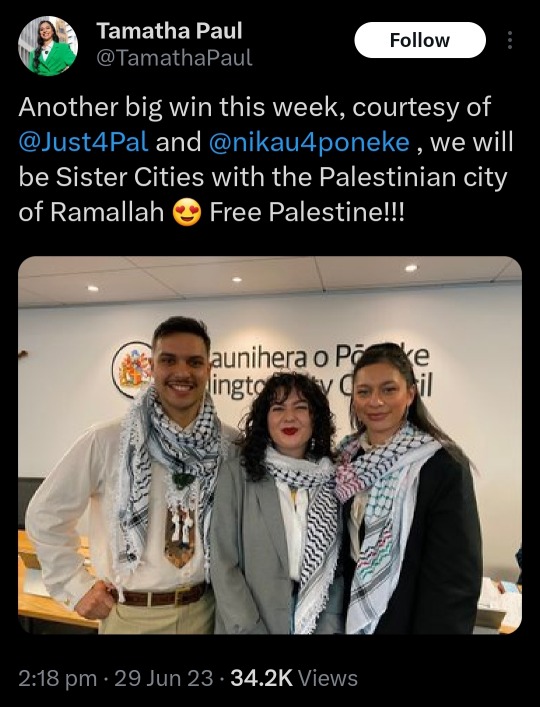
A tweet from Tamatha Paul (Waikato-Tainui, Ngāti Awa) on 29 June 2023. Another big win this week, courtesy of @Just4Pal and @nikau4poneke, we [Pōneke Wellington] will be Sister Cities with the Palestinian city of Ramallah 😍 Free Palestine!!!

A Pasifika woman holding two signs. The first says FREE PALESTINE FREE PALESTINE END THE APARTHEID! END THE BLOCKADE! END THE ETHNIC CLEANSING! CEASE STATE SANCTIONED VIOLENCE! CEASE COLONIALISM! BOYCOTT ISRAEL! From the river to the sea, Palestine will be free! The second sign has pictures of Palestinian and West Papuan flags. It says pacific islanders stand in solidarity with Palestine! #FREEWESTPAPUA #FREEPALESTINE CEASE COLONIALISM

A sign that has the tino rangatiratanga flag at the top and Palestinian flag at the bottom. It says Mai te awa ki te moana [from the river to the sea] MĀORI LAW STUDENTS For a FREE PALESTINE
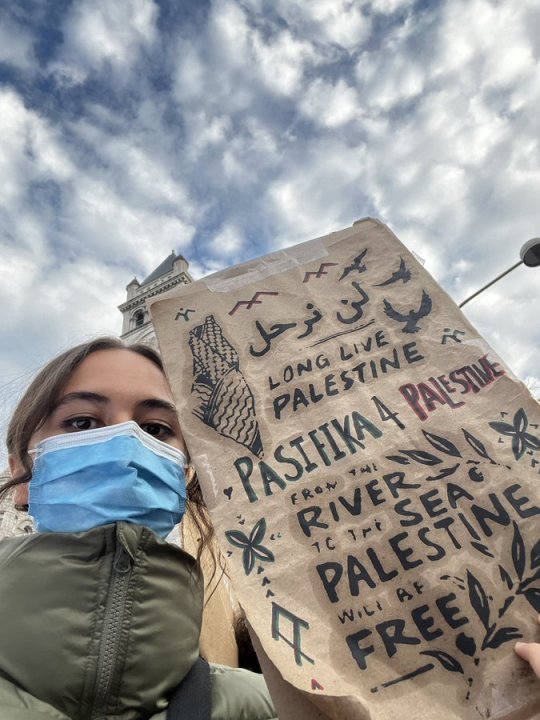
A Pasifika woman holding a sign decorated with Pacific symbols. It says LONG LIVE PALESTINE - PASIFIKA 4 PALESTINE - FROM THE RIVER TO THE SEA PALESTINE WILL BE FREE

Another Samoan fan. This one says PALESTINE WILL BE FREE
6K notes
·
View notes
Text
youtube
today we lost the great Efeso Collins, during a charity event to raise funds for clean drinking water for children in the pacific. here is his incredible parliamentary maiden speech from just last week (transcript below). i encourage you to listen, and if you can, donate to childfund's water fund here
Tēnā koe, Mr Speaker. Mai i ngā hau o Ōtāhuhu-nui-a-Rangi, o Maungarei, o Motukaroa; mai i ngā awa o Hikuwaru, o Tāmaki e rere ki te Waitematā, kei te Mānukanuka-o-Hoturoa, ko Kaiwhare, ko Taramainuku kua tau, kua tau ki ngā whenua o Ngāti Toa Rangatira, o Taranaki Whānui ki Te Ūpoko o Te Ika. Tēnā anō tatou.
[From the winds of Ōtāhuhu, of Mount Wellington, of Hamlin's Hill; from the rivers of Hikuwaru, of Tāmaki flowing to the Waitematā, to the Mānukau Harbour; Kaiwhare and Taramainuku have arrived, have arrived to the lands of Ngāti Toa Rangatira, of Taranaki Whānui in the Wellington region. Greetings to us all.]
E fakatālofa atu ki te māmālu o koutou na tamāna ma na mātua, vena foki na uho ma tuafāfine kua mafai ke fakatahi i te po nei. Vikia te Atua ko tātou kua mafai ke fakatahi venei. Mālo ma fakafetai.
Fai mai ina ua teʻi ae Iakopo i le mea sa moe ai, ona ia fai ane lea, e moni lava e i ai Ieova i le mea nei. E moni lava e i ai Ieova i le mea nei. Faafetai le Atua aua e le faaitiitia lou viiga. Ua ifo i ati malie tuʻumoega o le taeao le sa tafa i vanu tafaoga o manu sisina, ae sa faalepa le au pea, sa fili ma le manoa le fetu taʻimatagi, ae sei faalaolao le puli matagi aua ua nofoia vao tutuʻi i le malumalu ma nuʻu malumau o le maota.
Ou te le fagota la i le sao aua ua uma ona fili le utu ma uu le vao fofou. Fai mai le matematega nai tumua, ua pei o se iʻa e moemauga o le atuolo, o foliga matagofie ia ma le maualuga, maualuga lava o lenei aso aisea, ae a lea ua malutaueʻe le tiʻa sa maluʻia, ua tapu lalaga foʻi le vaʻa o le Tuimanʻua mamana ua atoa laʻau i fogaʻa.
Faafetai le Atua le Tama, le Alo ma le Agaga Sa, aua sa tu i Fagalilo tapaau o le alataua, ae sa matemate foʻi aiga sa Tagaloa pe tua ma ni a lenei aso. Ae faafetai i le Atua, aua ua tepa i ula, tagaʻi i ula, foʻi atu lou viiga e faavavau. Faafetai i le tapuaʻiga a oʻu matua ma oʻu aiga, faafetai tele i matua o si oʻu toʻalua ma ona aiga, i le latou lagolago aemaise talosaga molia. Faafetai i uo ma e masani, aemaise o le paʻia o le aufaigaluega totofi a le Atua, i soʻo se fata faitaulaga—Faafetai tatalo. Ae faapitoaugafa saʻu faafetai i si oʻu toalua Finevasa Fia aemaise si aʻu fanau pele Tapuiela ma Asalemo faafetai tatalo, malo le onosaʻi. Ae tapuaʻi maia ma le manuia.
Mr Speaker, it is an indescribable feeling to stand up and address this House. As a son of Samoan immigrants who made the mighty Ōtara 274—Southside hard—their home, I am well aware of the giants whose shoulders I stand on and the masters whose feet I learnt at. The courage, foresight, entrepreneurial spirit, and hope of our ancestors who journeyed thousands of years ago through the vast waters of Te Moana-nui-a-Kiwa brings me here today.
My parents arrived in New Zealand in the early 1960s, told that this was the land of milk and honey. Dad started off as a taxi driver with South Auckland Taxis, and mum on the factory floor at New Zealand Forest Products in Penrose. We lived in a four-bedroom State house on Preston Road in Ōtara, and I attended local schools: East Tāmaki Primary, Ferguson Intermediate, and the great Tangaroa College. We're forever grateful for the State house that was our home for around 20 years, and the quality public education we received from our local State schools.
I did try my hand for a short period at a decile 10 school outside of Ōtara, but that experiment lasted only two weeks. It was during the time in the late 1980s, when families from poorer areas were being discouraged from going to local schools because they weren't considered up to scratch. I'm glad we changed course and decided to high school it in Ōtara, where the motto of our school was "Waiho i te tokā tu Moana"—"Steadfast like a rock in the sea".
Later, at university, I went on to write my Master's dissertation on brown flight, critiquing the Picot reforms that have wreaked havoc on our public schooling system. That period was also a challenging time for my family because we were being told by our teachers to stop speaking Samoan at home and only to speak English. My parents didn't want us to fail at school, so we were allowed to speak English at home and over time we stopped speaking Samoan altogether. In the end, I lost my language. I struggled, I was embarrassed, and I felt incomplete. Even speaking to you in Samoan this evening gives me major tremors.
There's a saying in Samoan: "E le tu fa'amauga se tagata"—no one stands alone, no one succeeds alone—and, for me, no one suffers alone. Over the past years, with the support of my family and friends, I've taken to trying to converse again in Samoan, reading more texts in Samoan, praying in Samoan, and sending our youngest to a local Samoan early childhood centre. Our beautiful language, Gagana Samoa, has returned to our home and is helping to overcome the inadequacy that had taken root in my soul.
As I speak this evening, I'm mindful of the many young people who are navigating these at times treacherous and unsettled waters in life, filled with so much potential, energy, and hope, yet too often misunderstood. In my time as a youth worker in South Auckland, I've spoken with hundreds of young people with massive dreams for the future. We need youth workers, we need social workers, and we need mentors to walk alongside our young people, and, yes, we want our youth to be responsible and caring and considerate. So it's our job in this House to resource the people and organisations who will model the behaviour to them that we expect, but who also won't give up on them and won't come with a saviour mentality.
Many of our societal challenges are driven by poverty. We can achieve greater social cohesion and lift our sense of belonging by addressing poverty. I've been honoured to run youth mentoring programmes for nearly 25 years—that's about how old I am—and to this day I mentor young people. When we undertook and published research on youth gangs some years ago, the youth we spoke to had the solutions and just needed the means to make it happen. Too many of our young people are filling our prisons, and it is wasted human potential. Give them the tools, the resources, and the means to make a meaningful contribution to the world, and they will. I was at a conference recently about the threats to democracy and an attendee spoke about their work in developing nations and used the familiar retort, "You can't eat democracy." And I couldn't agree more. This House, this centre of democracy, needs to do more to engage our people, all of our people, so that they can see this House is not just relevant but an essential part of their lives.
The greatest challenge facing our generation is climate change. The Pacific Islands nations are among the most vulnerable to climate change in the world. The world's continued reliance on fossil fuels, loss of coral reefs, rising sea levels, and increasing severe weather patterns means that our extended whānau in the Pacific are in immediate danger. We, as a collective, must do all we can to do as we say out south "flip the script". Truth is, those who've done the least to create this predicament are being the hardest hit. Our challenges, whether ecological, geopolitical, or cultural, are diverse, but we're bonded by the inextricable ties we have to our lands and our oceans. We've inherited philosophies, knowledge systems, and profound ecological wisdom that holds the answers and drives our collective resilience—from West Papua to Hawai'i. Our fight for a climate resilient, nuclear-free and independent Pacific remains as strong as ever. We are not drowning; we are fighting.
I haven't come to Parliament to learn—learning happens as a matter of course through reflection. I've come to this House to help. Helping is a deliberate act. I'm here to help this Government govern for all of New Zealand, and I'm here to open the door, enabling our communities to connect better with this House. During the election campaign, I spoke to people frustrated about their lot in life, scared for their and their children's futures, and feeling their dreams were slipping away. The people I spoke to expect the Government to do more and move faster. And I know that there are some in this House who believe Government is not the answer to these challenges and that less Government is better. But here's the thing: the Government cannot be a bystander to people suffering confusion and disenfranchisement. New Zealand must close the divide between those who have and those who have not, because the reality for my community is that those who have more money often wield more power, more health, more housing, more justice, more access, more canopy cover, more lobbyists with swipe cards, and more time. And the opposite is true for those who have fewer resources.
It's hard to be poor, it's expensive to be poor, and moreover, public discourse is making it socially unacceptable to be poor. Whether it's bashing on beneficiaries, dragging our feet towards a living wage, throwing shade on school breakfast programmes, or restricting people's ability to collectively bargain for fairer working conditions, we must do better to lift aspirations and the lived realities of all our people. To that end, I want to say to this House with complete surety that the neoliberal experiment of the 1980s has failed. The economics of creating unemployment to manage inflation is farcical when domestic inflation in New Zealand has been driven by big corporates making excessive profits. It's time to draw a line in the sand, and alongside my colleagues here in Te Pāti Kākāriki, we've come as the pallbearers of neoliberalism, to bury these shallow, insufferable ideas once and for all. And this, sir, is our act of love.
Paolo Freire, in his seminal work Pedagogy of the Oppressed, said love is an act of courage, not fear; love is a commitment to others. No matter where the oppressed are found, the act of love is a commitment to their cause, the cause of liberation. The most recent election campaign left many in our Māori communities bruised and targeted for the perceived privileges supposedly bestowed upon them. Shared governance is a rich concept about how we include those who've been excluded for far too long in the work of this House and the democratic institutions that are fundamental to our collective wellbeing. We are Tangata Tiriti and we have nothing to fear. As a New Zealand-born Samoan living in South Auckland, I've experienced, written about, and spoken about racism in this country. I've also been on a well-publicised journey in understanding the needs and views of our rainbow communities, and I have a long way to go. And my message to whānau who often experience the sharp end of discrimination—disabled, ethnic, rainbow, brown, seniors, and neurodiverse—is thank you for trusting us with the responsibility of facilitating a new discussion on how we move forward together and make possible what was once deemed impossible.
The American civil rights activist James Baldwin said, "Not everything that is faced can be changed, but nothing can be changed until it is faced." We commit to working across this House as a nation and with each other irrespective of our post code, income bracket, skin colour, or level of qualification attained. But, in order for that work, we must come with humility, the desire to listen, and dare I say it, maybe speaking last. If I was to inspire anyone by getting to this House and my work over the next three years, I hope that it's the square pegs, the misfits, the forgotten, the unloved, the invisible—it's the dreamers who want more, expect more, are impatient for change, and have this uncanny ability to stretch us further.
199 notes
·
View notes
Text

Kua hinga te tōtara o Te Waonui a Tāne. Georgina Beyer (Te Āti Awa, Ngāti Mutunga, Ngāti Raukawa, Ngāti Porou), transwoman, Member of Parliament, Mayor, sex worker, activist, actress, rape survivor, model, drag queen, trailblazer, LEGEND. November 1957 – 6 March 2023.
Moe mai rā e te rangatira... moe mai rā.
110 notes
·
View notes
Text
Hana-Rawhiti Maipi-Clarke, representing Te Pāti Māori, was appointed New Zealand's youngest MP at 21 (since James Stuart-Wortley, who was elected in the country's first general election in 1853 when he was aged 20 years and 7 months).
During her maiden speech in December 2023, Maipi-Clarke criticised the National-led coalition government, claiming that it had "attacked my whole world from every corner." She identified health, the environment, water, land, natural resources and children as key areas of disagreement with the Government. She performed a haka for said maiden speech :
youtube
Maipi-Clarke has ancestry in Ngāpuhi, Ngāti Porou, Te Āti Awa, and Ngāi Tahu. The broadcaster Potaka Maipi is her father. She is the grand-niece of Māori language activist Hana Te Hemara. Taitimu Maipi, whose activism contributed to the removal of the Captain Hamilton statue in 2020, is her grandfather. Wi Katene, the first Māori MP to be appointed to the Executive Council, was her great-great-great-great-grandfather
#radblr#radical feminism#centering women#female activist#woc activist#indigenous women#Māori#te reo māori#New Zealand#Politics#world news#feminism#indigenous rights#ecofeminism#land back#inspiring women#women of color#✨ women✨#haka#fuck white supremacy#speech#badass#queen shit#Maipi-Clarke#Hana-Rawhiti Maipi Clarke#Te Pāti Māori#historical events#positive news#good news#wholesome
19 notes
·
View notes
Text
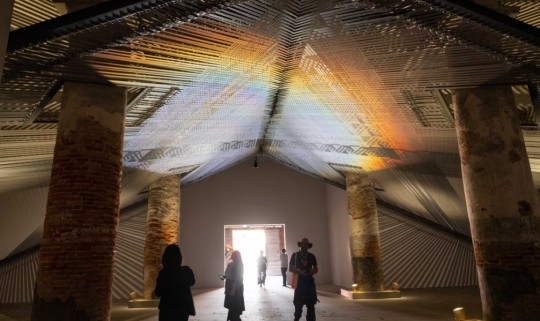
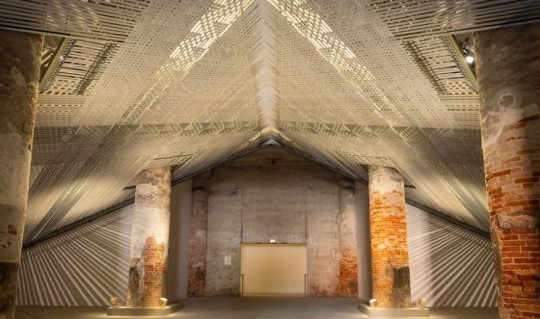

The Mataaho collective is a group of four Māori women artists from Aotearoa New Zealand: Erena Baker-Arapere (Te Ātiawa ki Whakarongotai, Ngāti Toa Rangatira, and Ngāti Raukawa), Sarah Hudson (Ngāti Awa, Ngāti Pūkeko, and Tūhoe), Bridget Reweti (Ngāti Ranginui and Ngāi Te Rangi), and Dr Terri Te Tau (Rangitāne and Ngāti Kahungunu ki Wairarapa).
They have won the Golden Lion from a jury at the 60th Venice Biennale for their large-scale work Takapau in the main exhibition.
The 200sqm suspended weaving is made from six kilometres of fluorescent trucking straps, 480 stainless steel buckles and ratchets, and 960 J-hooks – safety materials used in labouring jobs.
We come from working class families, our materials are an ode to that. This is reflective tape that you will see on safety gear in the labour workforce. Intended for high-visibility and often paired with fluorescent colours, these uniforms are meant to be seen- although the individuals wearing it become an insidious level of invisible. This is for those whose labour is relegated the background, to our parents and siblings, we celebrate you. - Mataaho Instagram
“We all come from working class whānau [families] and the materials we choose to use are a mihi [tribute] to them, who may not feel at home in the art gallery – we like to use materials they know and experience every day, so they have something to recognise in the art world.” - Sarah Hudson
More on Takapau and its creation here
Photographs by Ben Stewart
8 notes
·
View notes
Note
hey! first of all, free palestine! i know you are taking part in the protest here on tumblr, so i imagine this will only be answered after the 25th.
i am looking for polynesian female fcs in their 40s. could you help? thanks in advance!
Rachel House (1971) Ngāti Mutunga, Ngāi Tahu, White.
Deborah Mailman (1972) Te Arawa, Ngāti Porou, Bidjara.
Nikol Kollars (1973) Kānaka Maoli, Chinese, White.
Kaliko Kauahi (1974) Kānaka Maoli, Japanese.
Monica Galetti (1975) Samoan.
Teuila Blakely (1975) Samoan.
Keala Settle (1975) Ngāti Kahungunu Maori, Ngāi Tahu Maori, Rangitāne o Wairau Maori, Ngāti Raukawa Maori / White.
Simone Kessell (1975) Ngāti Tūwharetoa, Ngāi Te Rangi / White.
Miriama Smith (1976) Te Arawa.
Jamie Okuma (1977) Shoshone, Bannock, Luiseno, Kānaka Maoli, Ryukyuan.
Shannyn Sossamon (1978) Kānaka Maoli, Filipino, White.
Shavaughn Ruakere (1978) Te Āti Awa.
Tamina Snuka (1978) Samoan, Fijian.
Bic Runga (1979) Ngāti Kahungunu, Malaysian, Chinese.
Anapela Polataivao (1980) Samoan.
Stacey Leilua (1982) Samoan, Unspecified Māori, Unspecified White.
Lei’D Tapa (1982) Tongan.
Aaradhna (1983) Samoan / Gujarati Indian.
Thank you so so much for understanding that this would be posted later, it's now the 25th here so I'm replying and I hope this helps!
3 notes
·
View notes
Text
“It’s calling right beside me but, there’s absolutely no sign of it!” said celebrated birdsong recordist John Kendrick in 1984. He was straining to see a South Island Kōkako (Callaeas cinereus), a wattlebird endemic to Aotearoa (New Zealand), with a last recognized sighting in 1967. In 2021, a group [...] picked up flute-y tolls characteristic of this “Grey Ghost.” Even so, this did not convince scientific authorities that a bird existed. [...] The South Island Kōkako Trust, currently offering NZ$10,000 for confirming evidence of an alive Kōkako, also stresses photographs, video, and/or visible relics [...]. Privileging eye over ear, along with a materialistic gaze, in searches for last members of a species, enacts an epistemic violence that finalizes extinction [...]. These objectifying terms sound different than Māori whakapapa (genealogy) -- relating visible and invisible beings -- announced in the Te Ao Tūroa (Māori Natural History Gallery) in Auckland. [...]
Similar searches, sponsored by Pākehā (a New Zealander of European descent) institutions, took place in the early twentieth century for a close relation of Kōkako -- for vanishing Huia (Heteralocha acutirostris). The Eurocentric vanishing narrative also extends to peoples racialized and oppressed as non-white. In the nineteenth century, Pākehā ornithologist Walter Buller projected that the extinction of both the declining Huia and the “Māori race” would occur between 1884 and 1909. In 1922, Te Rangi Hiroa (Peter Henry Buck, Ngāti Mutunga, Irish-English), however, underscored a pēpeha (ancestral saying): “We will never be lost, for we spring from the Sacred Seed, which was sown from Rangiātea.” Contrary to an official narrative, many convincing reports indicated Huia were still living then.
---
This Anglo-colonialist Huia story could not be innocent of genocidal taint. In 1923, England-born J. G. Myers, a New Zealand Department of Agriculture scientist, looked back and published a final Huia date: 28 December 1907. This marked “the last specimens . . . actually seen” by a trustworthy witness -- fellow ornithological society member, Scotland-born W. W. Smith. Also on 26 September 1907, New Zealanders had declared a semi-independent dominion within the British Empire, no longer their colony. [...] Implicitly, 1907 links this symbolic rise of localized power with the demise of Huia, known to be Māori taonga (treasures) linked with Māori mana (prestige). Repeating the original Myers-Smith Huia claim republished in a 1928 Evening Post article and thereafter cited in a succession of natural histories, the extinction narrative continues to resonate with a system disrupting Indigenous sovereignty, ecology, and ontology. [...]
Meanwhile, between 1890 and 1910, note historians Carl Bradley and Rhys Ball, Māori “dual traditions of reform and protest . . . crystallised” against colonialism’s forced disconnections from lands, language, culture, and identity. Māori development expert Margaret Forster (Rongomaiwahine, Ngāti Kahungunu) stresses how the plural voice of Māori in various politics of resistance and cultural and ecological recovery “has never been silent.” Beyond the 1907 signposts, many voices, never silent, also call for listening. In 1909, Māori knowledge-holder Henare Hamana (Ngāti Awa, English) accompanied a Huia-search expedition organized by Dominion Museum-affiliated scientists. On this trip, imitating Huia calls, Hamana attracted at least one male bird. Hamana’s breath, whistling Huia-like phrases, continues to echo from a 1948 recording [...].
---
Two recently composed waiata (songs) integrate this Hamana-Huia audio. In “Tohu maumahara mō ērā kua hinga Memorial to the Fallen” in Museum of New Zealand Te Papa Tongarewa, a waiata lamenting “the loss of the huia” animates dimly lit cases of skins, bones, and feathers beside lists of other now-invisible kin. In Pūkaha/Mount Bruce, “Waiata Manu Huia,” cultural audio by tāngata whenua (Indigenous hosts) Rangitāne, flows into this Huia-absented remnant of Te Tapere-nui-o-Wātonga (a.k.a. Seventy Mile Bush), the last substantial remainder of this vast forest of high importance to Rangitāne as well as the birds. During the nineteenth century, the New Zealand government had pressured Rangitāne to acquire the land.
In 2016, in Te Tiriti o Waitangi Treaty redress, New Zealand apologetically returned the remnant to Rangitāne. Rangitāne gifted the Pūkaha land for the “people of Aotearoa” -- encouraging engagements with them/their land in just relations, mending whakapapa (genealogy), te reo Māori (language), and kaitiakitanga (sustainability ethics). “Waiata Manu Huia” speaks of Huia, relatives, like Moa, sadly silent in this world. Yet, “forever singing in the spirit world.” Sound made by birds binds both worlds in Māori genealogy and multisensory cosmology. “Ko tātou ngā kanohi ora” (“We are the living eyes”), also say Rangitāne kaitiaki land-keepers. “Waiata Manu Huia” concludes with a traditional calling in to relation, doing and being our best together: “Whano, whano! Haramai te toki! Haumi ē! Hui ē! Tāiki ē!”
---
Text by: Julianne L. Warren and Michael Roche. “Sight and Sound: Beyond the 1907 Huia Extinction Story.” Environment & Society Portal, Arcadia (Spring 2023), no. 2. Rachel Carson Center for Environment and Society. Published online in February 2023.
23 notes
·
View notes
Text
A List Of Known Māori Voice Actors that Star Wars could've hired for the clones instead of whitewashing them.(Please feel free to add more)
Jemaine Atea Mahana Clement. - Ngāti Kahungunu through his mother.
Daniel Logan. - Of Māori descent. Best known for his portrayal of Boba Fett from the 2002 film Star Wars: Episode II – Attack of the Clones & voiced Fett in the animated series Star Wars: The Clone Wars.
Temuera Derek Morrison (MNZM). - Te Arawa (Ngāti Whakaue) and Tainui (Ngāti Maniapoto, Ngāti Rarua) whakapapa. For those unfamiliar, whakapapa means genealogy. East Coast elder, Apirana Ngata, explained that whakapapa is ‘the process of laying one thing upon another. If you visualise the foundation ancestors as the first generation, the next and succeeding ancestors are placed on them in ordered layers. Played the role of Jango Fett in the 2002 film Attack of the Clones, provided the voice of Boba Fett in the re-release of The Empire Strikes Back, portrayed Boba fully in the second season of The Mandalorian and in the show The Book of Boba Fett.
Taika David Cohen (ONZM), also know as Taika Waititi. - Describes himself as a "Polynesian Jew". His mother's family were Russian Jews & His father was of Te Whānau-ā-Apanui descent.
Piripi Taylor. -Ngāti Awa, Tūwharetoa, Te Arawa.
#star wars#clone wars#star wars tcw#star wars rebels#star wars the bad batch#star wars tbb#unwhitewashtbb#racism#whitewashing#māori#clones#the bad batch#psa i am not māori nor polynesian.#psa this was literally a ten minute google search for all the information at most to compile this post#psa these are only the most popular voice actors who are CONFIRMED as Māori#there will be many more and there is no excuse for disney to not hire#if they have experience playing or voice acting within star wars that has been included.#anti filoni#meta#i don't know if anyone has done this before - if they have please tell me so I can reblog their post too
27 notes
·
View notes
Text
On the section of Māori Made Easy I'm up to studying, I need to memorise my pepeha. Thing is, I'm pretty sure Pākeha don't have pepeha, right? I'm pretty sure the version we can use is called a mihimihi, but someone correct me if I'm wrong here.
Mihi below the cut:
Tēna koutou, tēna koutou, tēna koutou katoa.
Ko Kapukataumahaka te maunga
Ko Puke Haukea te awa
Ko Ngāti Pākeha te iwi
Nō Ōtepoti ahau
Ko Maree rāua ko Richard ōku mātua
Ko Sam tōku ingoa
Nō reira,
Tēna koutou, tēna koutou, tēna koutou katoa.
2 notes
·
View notes
Text
Pepeha
Ko te Ūpoko o Tahumatā te maunga
Ko Ōkana te awa
Ko Uruao, te waka
Ko Wairewa te Marae
Ko Makō te Whare Tūpuna
Ko Ngāti Irakehu te Hapū
Ko Ngāi Tahu ngā iwi
Ko Robert Gilbert tōku Matua
Ko Michelle Gilbert tōku Whaea
Ko Jackson Gilbert tōku ingoa
2 notes
·
View notes
Text
Littoral Manoeuvre Crafts Strengthens Royal New Zealand Navy’s Capability
The three 12.5 metre Littoral Manoeuvre Craft (LMC) will be deployed by HMNZS Matataua, part of the RNZN’s Littoral Warfare Force, as fast, dependable and fit-for-purpose vessels. Built by Hobart-based Sentinel Boats, the three LMC are the first of their kind to join the RNZN fleet. The LMCs will shortly be operational from Devonport Naval Base and HMNZS Matataua, but will eventually be able to embark, when needed, onto parent ship HMNZS Manawanui and be transported to any area of operation. Whakatāne is HMNZS Matataua’s ceremonial homeport, and Commander Leslie approached Eastern Bay of Plenty’s Ngāti Awa for guidance on naming the three vessels. The mangō (shark) is important to the iwi and the LMCs were given the names Matawhā (bronze whaler), Ururoa (great white) and Mako (blue pointer).
The three 12.5 metre Littoral Manoeuvre Craft (LMC) will be deployed by HMNZS Matataua, part of the RNZN’s Littoral Warfare Force, as fast, dependable and fit-for-purpose vessels. Built by Hobart-based Sentinel Boats, the three LMC are the first of their kind to join the RNZN fleet. The LMCs will shortly be operational from Devonport Naval Base and HMNZS Matataua, but will eventually be able to…
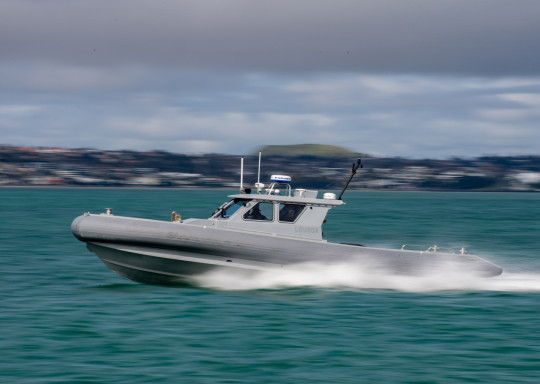
View On WordPress
0 notes
Text
Creative Profile 7 - Chris Huriwai
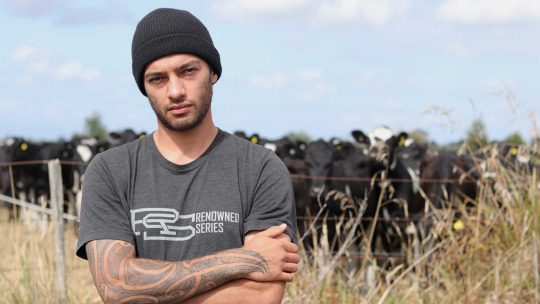
Chris Huriwai is a director, producer and activist
"Chris Huriwai, 29, (Ngāpuhi, Ngāti Porou and Te Ati Awa) is an animal rights activist and plant-based advocate whose documentary Milked, which exposes the whitewash of Aotearoa’s dairy industry, is screening at this year’s New Zealand International Film Festival. He’s also a three-time unicycle world champion. His partner Samah Seger, 29, is an animal rights activist and the couple currently live near Dargaville."

0 notes
Text
SDL - Grad604 Expand your view
Finding Aotearoa creatives, designers and spaces.
“Design Assembly” The home of New Zealand graphic design.
Design Assembly loves to profile the breadth and depth of design practice in Aotearoa. For July they’re celebrating Māori design, designers, and illustrators.
Ko Taupiri te maunga, ko Te Puehu o Waikato te moana, ko Waikato te awa, ko Tainui te waka, ko Waikato te iwi, ko Ngāti Tamaoho te hapū, ko Mangatangi te marae, nō Tāmaki Makaurau ahau. Ko Sara Moana tōkū ingoa.
Sara discusses how her inspiration and creative journey began when she was studying illustration at Elam, looking into her previous interests of Sculpture and Performance Art.
Sara Moana - Freelance illustrator.
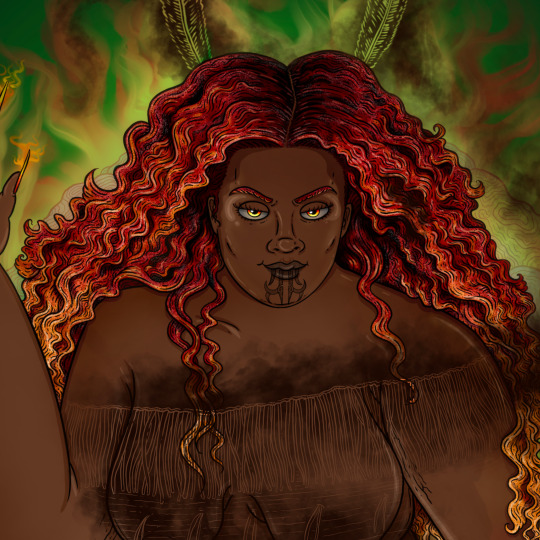
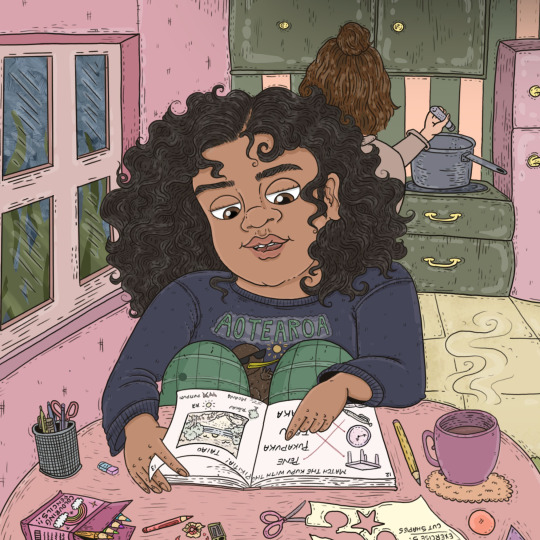
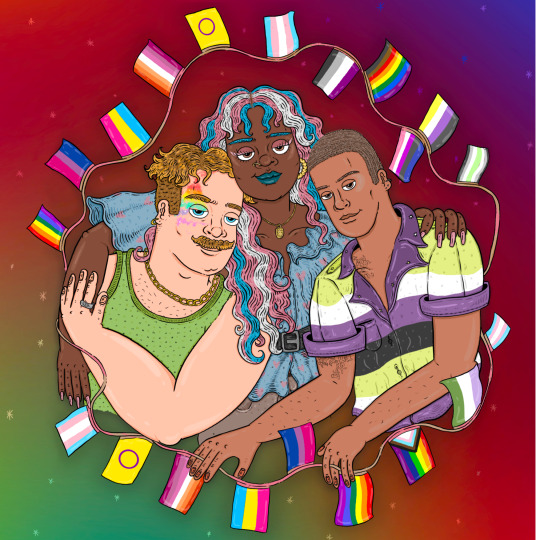

Under the hood with …Nikki Kennedy, Founder of Taputapu
He mokopuna ahau nō Te Tairawhiti mai i ngā maunga Hikurangi, Makeo me Maunga Haumi. Ko Ngāti Porou, Te Aitanga a Mahaki me Te Whakatōhea ngā iwi. Ko Nikki Kennedy ahau.
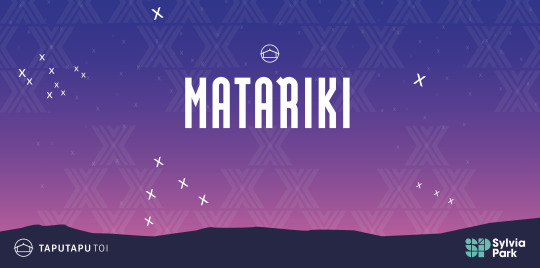
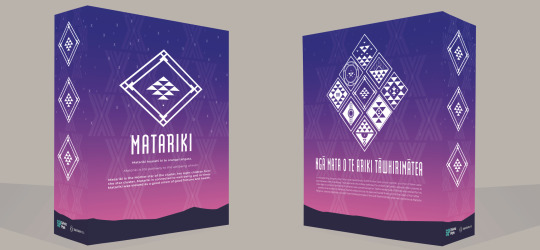
- Aotearoa design and designers showcasing their work in large scale areas such as Sylvia Park mall - showing the large impact and effect that local designers can have.
“Now that the project has finished we will be installing the artwork on Monday 3rd of July and then the public can enjoy our artwork at Sylvia Park. We are working on a variety of brand packages for our clients, that’s our bread and butter mahi. I’m also heading overseas to share about our Matariki artwork at a Thailand Matariki Gala event which is really exciting to be part of. I will be joining other Māori creatives, carvers and fashion designers to talk about how Matariki influences our design mahi and processes etc.

“Based in Auckland, Seachange are an award-winning design and branding studio—they work from digital design to naming and everything in between. Keeping themselves intentionally small doesn’t stop Seachange creating a big impact—their brands stand out for a whole variety of different reasons. One such brand is Ghost Street Dumplings, a pop-up dumpling, which used the company’s name very literally combined with a cute illustration to create a wonderful, memorable brand.” (Seachange, 2023)

“BrandAid is a brand development and design agency based in Dunedin on New Zealand’s South Island. The award-winning agency’s creative director Luke Johnston has over 19 years experience in the industry—and founded BrandAid 15 years ago. They’ve worked with a huge range of clients, including their home city but it was this reusable packaging for Bay Rd Peanut Butter—which employs striking typefaces to make the look as good as it is for the planet.”


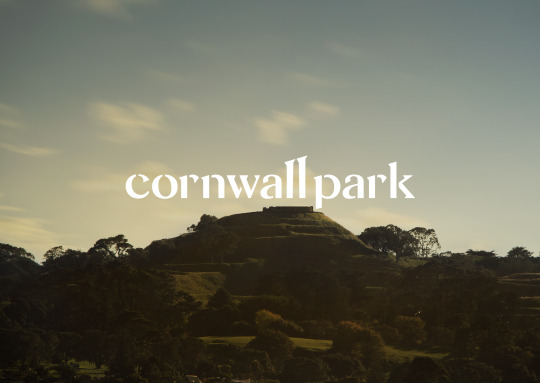



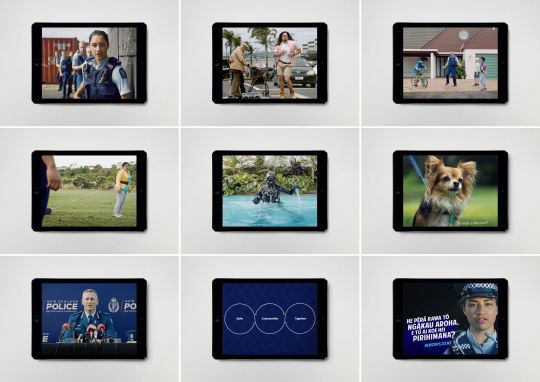
Pohewa Pāhewa: a Māori design kaupapa
1 Jul–3 Sep 2023

Desna Whaanga-Schollum
Connection through exploration and the articulation of cultural identity. Projects see her collaborating with a wide variety of communities, business and design professionals, artists and academics to achieve results which affect change in people, practice and place. Desna is actively involved in Māori identity design, discourse and stakeholder engagement in Aotearoa, via design consultancy, research, exhibitions, wānanga, speaking engagements and governance roles.

“Graphic design is about having visual conversations with people. In order to have a good conversation I need to look people in the eye, I need to listen, and I need to know a bit about the topic at hand. People are smart, they know when you’re faking a smile, so it pays to put your heart into it as much as possible.” - Tyrone Ohio “People of Britomart”

“Graham Tipene (Ngāti Whātua, Ngāti Kahu, Ngāti Hine, Ngāti Haua, Ngāti Manu) is a Tā Moko artist who has been involved as a consultant and key artist on civic and Council-led projects throughout Tāmaki Makaurau Auckland. His public work brings Māori kaupapa into the built environment of the city, with major projects including the Waterview tunnel, Victoria Park, Auckland Library, and Tirohanga Whānui Bridge in Albany.In the latest episode of ‘Cultured Conversations,’ Auckland Art Gallery Director Kirsten Lacy speaks with Graham about Tā Moko and on bringing a Māori lens to civic spaces.”
Johnson Witehira
“My kaupapa (mission) as both an artist and designer is to bring Māori visual culture back into the lives of all Māori. This is done through careful consideration of how indigenous culture, design and technology intersect. We once created all the things in our world; the clothes, buildings, vehicles and tools. Nowadays everything is made for us. If we’re lucky we get to decorate. I want to put Māori back in the drivers seat, so we’re active participants in creating the tools and the world we want to live in.”
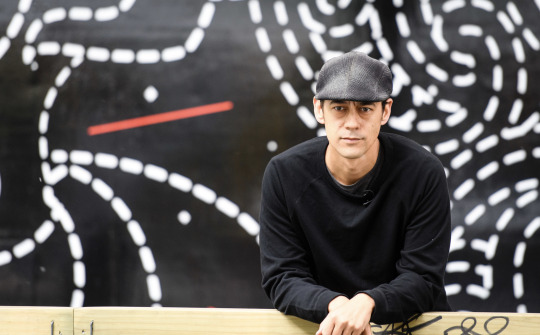
Zoe Black
“Zoe has been with the gallery for two years working across curatorial programming, community development and public programmes. During this time she has made an extraordinary contribution to the organisation, leading Māori programming, alongside extensive work with Moana and migrant communities within a kaupapa of co-leadership. This work now forms a key focus of our exhibition programme.The establishment of this new position is an acknowledgement of Zoe’s leadership, and the expanding work Objectspace continues to undertake nationally. It heralds exciting change for the gallery and their small but mighty team.” Objectspace
0 notes
Note
On one news tonight they said that they are doing Powhiri for all the World Cup teams Sweden and South Africa are the first
Yeah I imagined that there would pōwhiri for the teams but not right away. As it is a long flight and tbh a pōwhiri can be pretty long.
I wonder if they are going to be combined because both Sweden and South Africa a both in Welly so will be Te Āti Awa or Ngāti Toa doing the powhiri most likely.
Spain isn't at their base camp yet. So imagine they will get theirs when they get to Palmy.
0 notes
Text

Week 1 — Student-Directed Learning:
Here I have collected multiple images of landmarks that are represented in my Pepeha.
We can see in the top left, historical photos of my Maunga, Te Mata peak. This rising giant lives peacefully in the southern ridges of Hawke's Bay. Just southeast of Havelock North. The peak holds a lot of cultural importance to the Te Rehunga of Ngāti Ngarengare, which is a sub-tribe of Ngāti Kahungunu. The photo was taken the day the road leading up to the peak was opened in the 1930s for better access.
Next to that image on the right, shows the composure of Maori woman in a canoe. The photo was taken in the Tūtaekuri awa in the 1920s. Below that is the continuation of the Tūtaekuri river, the image in the middle depicts the river flooding in the 1930s, the 30s being a rough decade for the Hawke's Bay region as a whole. The Hawke's Bay Earthquake a couple years earlier decimated the towns of Napier and Hastings. To the right of that shows the location of the Tūtaekuri river on the map, running between the two twin towns.
The bottom left shows part of a seaplane hangar in the place I stay, Tāmaki Makaurau. More specifically in the suburb of Onekiritea, or Hobsonville. Hobsonville served a critical role for Aotearoa during WWII.
0 notes
Note
Hello! I really liked your list of alternate FCs for Sebastian Chacon. Could I ask for another one, but I don't necessarily need the FC to be Latino, just a similar vibe and if possible curly hair, please?
Chai Hansen (1989) Thai / Unspecified Australian.
Jacob Anderson (1990) Black Carribean and Scottish.
Varun Saranga (1990) Indian.
Alex Tarrant (1990) Niuean, Samoan, Ngāti Pāoa.
Nathaniel Curtis (1990) Indian / British - is queer.
Ramy Youssef (1991) Egyptian.
Burak Deniz (1991) Turkish.
Zaqi Ismail (1992) Indian.
Motaz Malhees (1992) Palestinian.
Halit Özgür Sarı (1993) Turkish.
Hunter Page-Lochard (1993) Nunukul, Yugambeh, Haitian, White.
Jordan Fisher (1994) English, Irish, Scottish, Welsh, Cambodian, Tahitian, African-American, Cherokee, Sioux.
Sebastian De Souza (1993) English, Konkani Goan Indian, Irish.
Jordi Webber (1994) Ngāti Toa, Te Āti Awa, Ngāti Raukawa, White / Te Arawa, Ngāti Maniapoto, White.
Achraf Koutet (1995) Moroccan.
Emilio Sakraya (1996) Moroccan / Serbian.
Aria Shahghasemi (1996) Iranian.
Evan Evagora (1996) Cook Island Māori / Greek Cypriot.
Odiseas Georgiadis (1996) Ghanaian / Greek.
Bazzi (1997) Lebanese.
Sami Outalbali (1999) Moroccan.
+ here's the list of Latino alts!
Hey! I honestly haven't seen anything he's in so I don't know if there's another specific vibe other than how he looks but here are some curly-haired suggestions for you.
5 notes
·
View notes